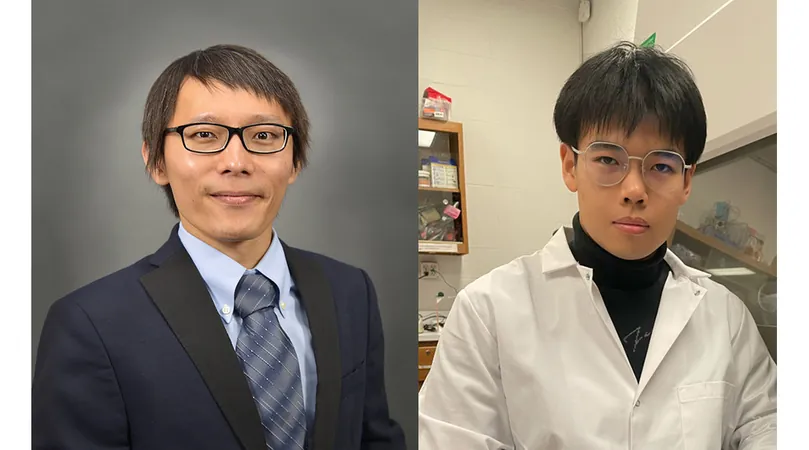
Revolutionary Light Technology Promises to Combat Fungal Threats to Cereal Grains
2024-11-22
Author: Wei
Revolutionary Light Technology Promises to Combat Fungal Threats to Cereal Grains
A recent study from the University of Illinois Urbana-Champaign has shed light on an innovative approach to tackle a significant threat to food security: fungal contamination in cereal grains. With annual economic losses reaching hundreds of millions of dollars, researchers have turned to microplasma-based far-ultraviolet C (far-UVC) light as a potentially safe and effective solution for alleviating the dangers posed by fungi such as Aspergillus flavus and Fusarium graminearum, which can severely affect grain quality and pose health risks due to mycotoxin production.
Current methods of using conventional UVC light, which operates at 254 nanometers, present risks to human health, as this wavelength can inflict damage to skin and eyes. However, this new technology utilizes far-UVC light at a wavelength of 222 nanometers, found to be safe for humans even with extended use. Yi-Cheng Wang, an assistant professor in the Department of Food Science and Human Nutrition, emphasized the significance of this development, stating, 'Light-based technology is easy to use, and it incurs minimal costs compared to many other treatment methods available today.'
The process employed by the researchers demonstrated extraordinary effectiveness against fungal spores. Experiments revealed that at the highest treatment doses, a staggering 99.999% of spores from both tested fungi were inactivated. Importantly, the light primarily impacts microorganisms without penetrating human skin or eyes, thus ensuring safety for users.
In exciting trials, the study further sought to assess the implications of far-UVC light treatment on the mycelial growth of the two fungi. Initial results showed that growth was inhibited on agar plates, indicating potential for widespread efficacy. To tackle the unique challenges posed by three-dimensional food products, the team developed a sophisticated treatment system that utilized multiple lamps positioned to surround and illuminate corn and wheat grains, achieving over 90% reduction in fungal presence.
Wang pointed out that the texture of cereal grains contributed to the variation in treatment effectiveness compared to liquid samples, but the results were still comparable to outcomes produced using traditional UVC methods. The study also raised hopes for the quality of treated grains, with observations indicating no adverse effects on moisture content or germination rates in the wheat, while notable increases in corn germination were registered, suggesting beneficial effects of the light treatment.
Wang envisions a future where grains are treated with this far-UVC technology post-harvest but pre-processing. If implemented widely, this approach could serve not only as a safe and efficient means of mitigating fungal threats but might also enhance food security and reduce economic losses associated with grain contamination.
The groundbreaking research, titled 'Mitigating fungal contamination of cereals: The efficacy of microplasma-based far-UVC lamps against Aspergillus flavus and Fusarium graminearum,' is published in Food Research International. A significant push for this project was supported by the ADM Institute for the Prevention of Postharvest Loss, alongside funding from USDA-NIFA.
As this promising technology moves forward, it continues to raise essential questions and hopes about the future of food safety, showcasing that innovative solutions can emerge from scientific research to tackle global challenges.



 Brasil (PT)
Brasil (PT)
 Canada (EN)
Canada (EN)
 Chile (ES)
Chile (ES)
 España (ES)
España (ES)
 France (FR)
France (FR)
 Hong Kong (EN)
Hong Kong (EN)
 Italia (IT)
Italia (IT)
 日本 (JA)
日本 (JA)
 Magyarország (HU)
Magyarország (HU)
 Norge (NO)
Norge (NO)
 Polska (PL)
Polska (PL)
 Schweiz (DE)
Schweiz (DE)
 Singapore (EN)
Singapore (EN)
 Sverige (SV)
Sverige (SV)
 Suomi (FI)
Suomi (FI)
 Türkiye (TR)
Türkiye (TR)